If you are a team facilitator, and you are looking to grow your leadership skills, this is the place to be! In “7 Tips To Improve Your Team facilitation Skills” we learn that team facilitation starts with developing the right mindset and meeting preparation process.
It’s informed by the things you believe as a facilitator, such as believing the group has the collective wisdom to solve the challenge at hand. Being aware of your bias means understanding how you can intentionally or unintentionally influence the group process.
No matter the kind of meeting you walk into, your job is to help the group get over the hurdles of face-to-face communication. We’ve put together a checklist of what ‘Basic Agile Facilitation’ feels and looks like.
Step 1: Basic Agile Facilitation
Purpose: Lead the process of a meeting
Personal:
- Process for tasks and outcomes
- Focus is on making meeting run better and more collaboratively
Symptoms: Team needs help with meetings
Sounds like: “Help us get better at running our release planning meetings”
Leadership: Active leadership from the facilitator who takes the process lead and designs a process to help the group achieve their desired outcomes.
Outcomes: Achievement of a specific goal or deliverable (i.i team charter, decision on work priorities, release plan etc.)
As well as:
What are you doing?
- Creating a clear meeting purpose, agenda, working agreement and a process that engages the whole group.
- Helping the team learn the agile practices – stand-up, team chartering, iteration planning, release planning, retrospective.
How might you be using Structural Dynamics with the team?
- Notice the four action stances and how to bring or call for another action in the moment.
How are difficult problems handled?
- Mostly off-line or 1:1 with feedback about impact.
What level of self-mastery might be needed here?
- Awareness of your own behavioral profile and how it might impact how you work teams.
Leveling Up Your Facilitation Skills
Once you have these skills and understand this framework, you will be able to move on to Advanced Team Facilitation.
The five cornerstones of the Agile Team Facilitation Stance include:
- Honoring the wisdom of the group
- Maintaining Neutrality
- Upholding the Agile Mindset and Practices
- Standing in the Storm
- Holding the Group’s Agenda
Read the following checklist about what Advanced Team Facilitation feels and looks like.
Step 2: Advanced Team Facilitation
Purpose: Empower the team to facilitate themselves
Personal:
- How the group is working.
- Focus is on improving interactions, communications and decision-making skills of the team.
Symptoms: Challenges with behavior or interpersonal relationships
Sounds like: ”Help us improve how we work so we can facilitate our own work.”
Leadership:
- Active leadership from the facilitator that happens more from the back than the front.
- The emphasis is on the team’s capability to be more self-facilitating and self-organizing.
Outcomes: Improvement in awareness, skills and effectiveness as a team.
As well as:
What are you doing?
- Naming structural patterns so the group can become more aware of their helpful vs unhelpful patterns.
- Designing group processes to help change the patterns you see in the team.
How might you be using Structural Dynamics with the team?
- Diagnose a stuck pattern in a team.
How are difficult problems handled?
- Name challenging patterns in the group, help them navigate the challenges or develop working agreements to prevent them.
What level of self-mastery might be needed here?
- Increasing awareness and able to see patterns in the moment – yours and others.
- Expanding your tolerance for difference.
- Becoming “multi-lingual” and able to change your vocal range when needed.
Check out this Facilitation Toolkit!
Leadership Journey to Agile Team Coach
Growing leadership competency is a cornerstone of creating organizational change
Increased performance outcomes are the direct result of the fact that the competencies of individual coaching, team coaching, mentoring, training, and facilitation help leaders build their range of leadership.
At TeamCatapult, we call this “leadership range.” It refers to the ability of individuals to lead from the front and set a clear direction. It also refers to their ability to lead from behind, empowering others to make the move and understanding how to support ideas and create space for all voices to be heard.
Look at the following checklist to see if you are already at the next step!
Step 3: Agile Team Coaching
Purpose: Empower the team to lead and tackle more systemic challenges.
Personal:
- How the system is working.
- Focus is on the system as a whole and how it’s working or not working.
Symptoms: Systemic challenges and stuck patterns that are keeping the team from their full potential.
Sounds like: “Help us develop as a team so that we reach high performance.”
Leadership:
- Active leadership is happening within the team.
- The team is doing their real work either in a meeting, work session or at their desks.
- The coach is observing and intervening when appropriate or needed.
Outcomes:
- Positive changes in individual and team performance.
- Individual and groups shift in mindset, deepended awareness and intentionality about working together effectively.
As well as:
What are you doing? Live and “in the moment” coaching opportunities within the team to neutrally name what is happening so the team can see it and take their own actions.
How might you be using Structural Dynamics with the team?
- Diagnosing a stuck patterns in a team and revealing it to the team so they can see it, too.
- Changing theme “in the moment” so that they are able to change the nature of their conversation for more productive outcomes.
How are difficult problems handled?
- Problems are seen as systemic issues rather than 1:1 conversations and are with the system in the room.
- “Bring the conversation in the room” becomes a guiding principle.
What level of self-mastery might be needed here?
- Changing your behavior in order to help the team change their pattern and get different results.
Next Step: Coaching Agility From Within Cohort!
Where in this journey to masterful agile team coaching are you?
Once you’ve mastered basic agile facilitation, advanced team facilitation and you’ve become an agile team coach, what’s next is an exciting journey! We invite you to learn more about “A Cohort Journey to Masterful Agile Team Coaching”
This 9-month TeamCatapult cohort starts on 10/25/21. We are accepting applications now. Click here to apply. We also invite you to learn more about this program by reading what those who’ve completed the program are saying.
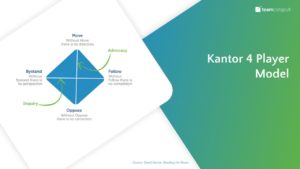
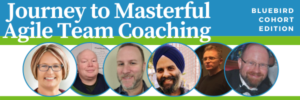
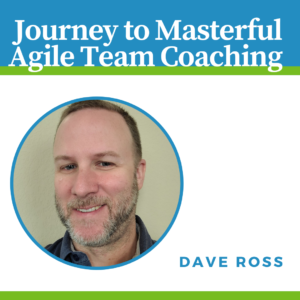
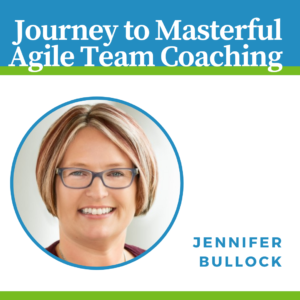
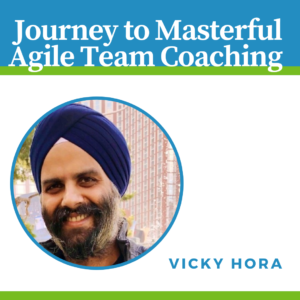 Vicky
Vicky